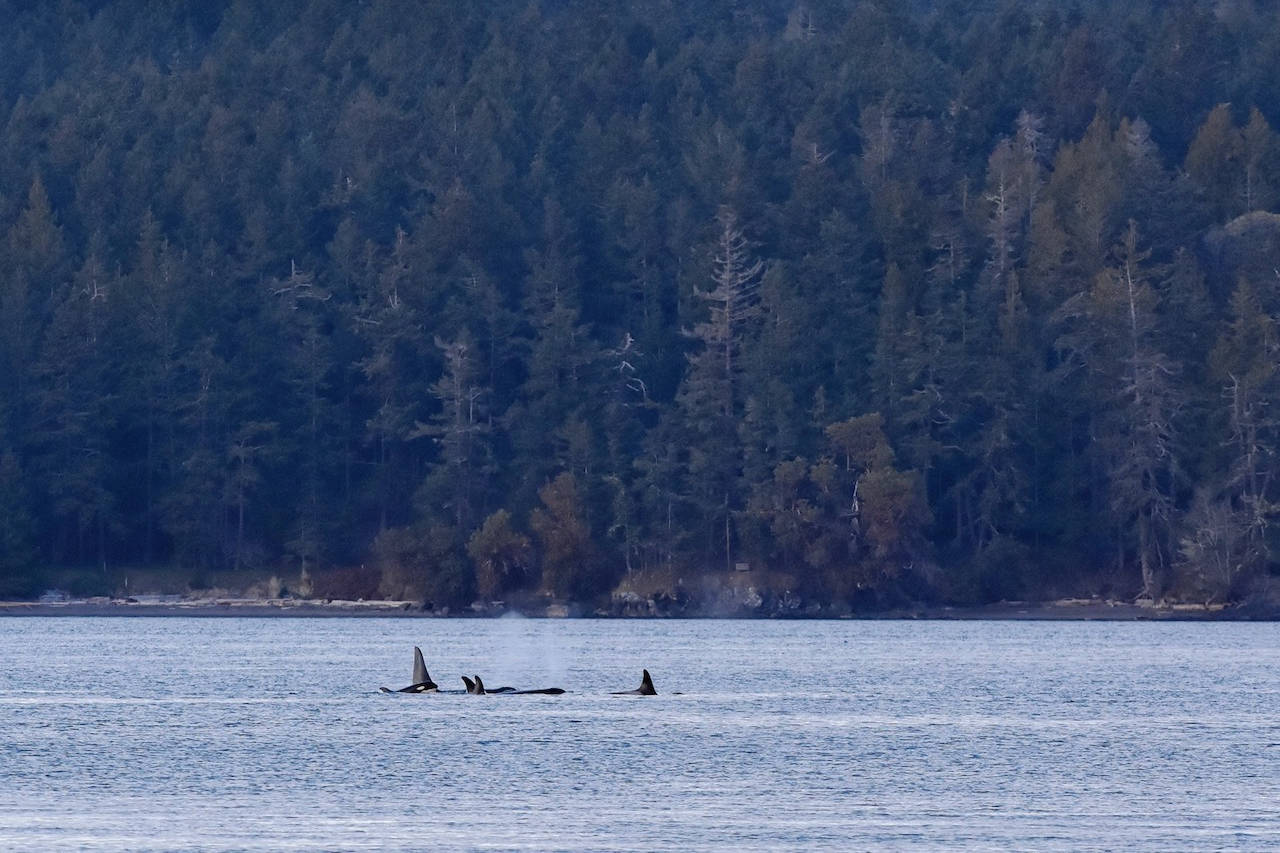Editor’s note: This article was released prior to the return of the Southern residents to the Salish Sea. On the evening of July 27, members from all three Southern resident pods made an appearance off the western shore of San Juan Island.
—
Submitted by the Orca Behavior Institute.
May through September used to be heralded as the peak season for seeing the Southern resident killer whales in the Salish Sea. For decades, J-Pod, K-Pod, and L-Pod were here so frequently that the inland waters of Washington and British Columbia were designated the core summer habitat for these endangered orcas. They used to be seen on a near-daily basis for months on end. Now, we’ve passed a grim milestone: 100 consecutive days without J-Pod.
J-Pod was last seen in the San Juan Islands on April 10. K-Pod made a brief visit to the Salish Sea before heading back to the outer coast on July 1, but K-Pod and L-Pod have not been documented in inland waters since late February. While members of all three pods have been spotted at Swiftsure Bank off the western end of the Strait of Juan de Fuca in July, none of them have taken their typical summer route to follow Chinook salmon migrating towards the Fraser River.
“We published a study in 2018 showing the declining spring presence of the Southern Residents and its correlation to the crashing of the Fraser River Chinook salmon runs,” said Monika Wieland Shields, director of the Orca Behavior Institute. “We never thought their summer visits would also diminish so soon. We never thought we would see an absence of more than three months.”
J-Pod has historically been documented in the Salish Sea nearly every month of every year.
“For the first time since Orca Survey began in 1976, we have gone 100 days without the most ‘resident’ of the three pods in our waters during the peak season,” explained Dr. Michael Weiss, a biologist with the Center for Whale Research. “This is a sure sign of dire, drastic changes in the Salish Sea and Fraser River ecosystems.”
“As much as we miss seeing the Southern residents, we all hope that they are finding plentiful food off the coast, enough for the population to grow and thrive,” said Cindy Hansen of Orca Network. “They used to spend their summers here, having greeting ceremonies, and socializing with one another. The lack of salmon may be impacting more than their health and ability to reproduce. It may also be depriving them of an important part of who they are as a society.”
Bigg’s killer whales, humpback whales, minke whales, and occasional gray whales are still being seen with regularity in the Salish Sea as the summer progresses.
“There are whales here, but there is no replacing the Southern Residents,” said Shields. “We all feel it. We trust that they are doing what they need to do, but it is not the same without them.”



